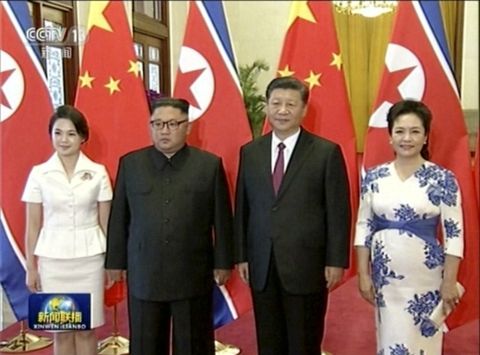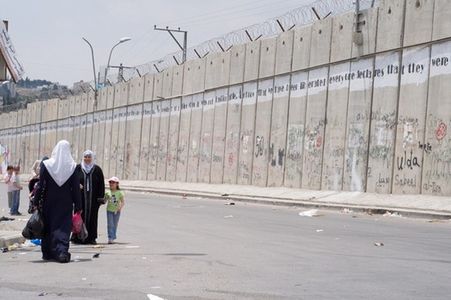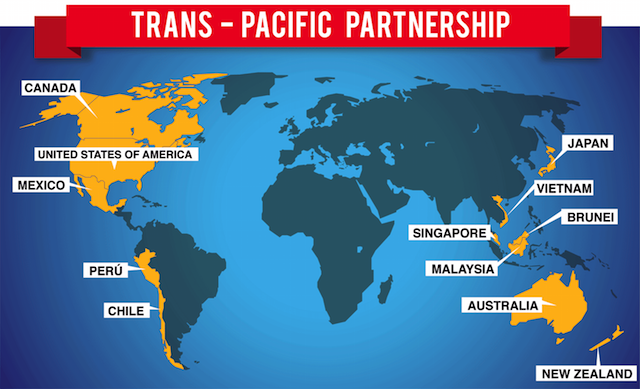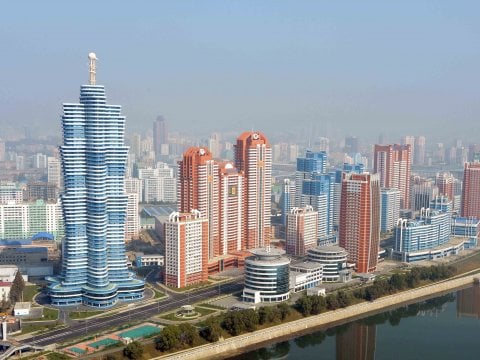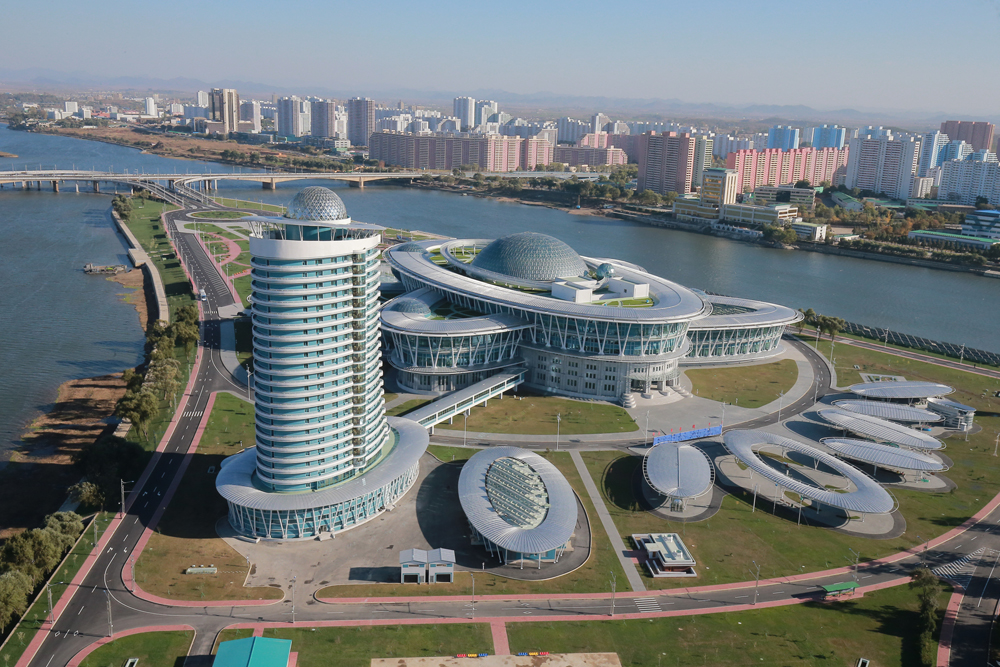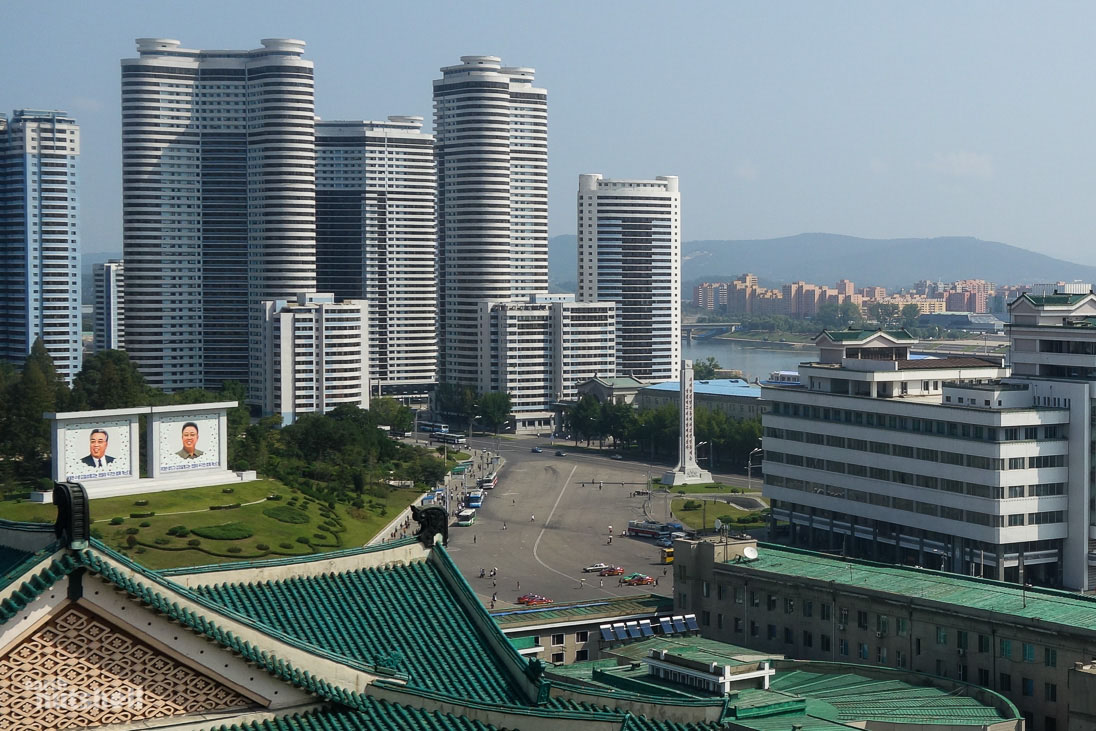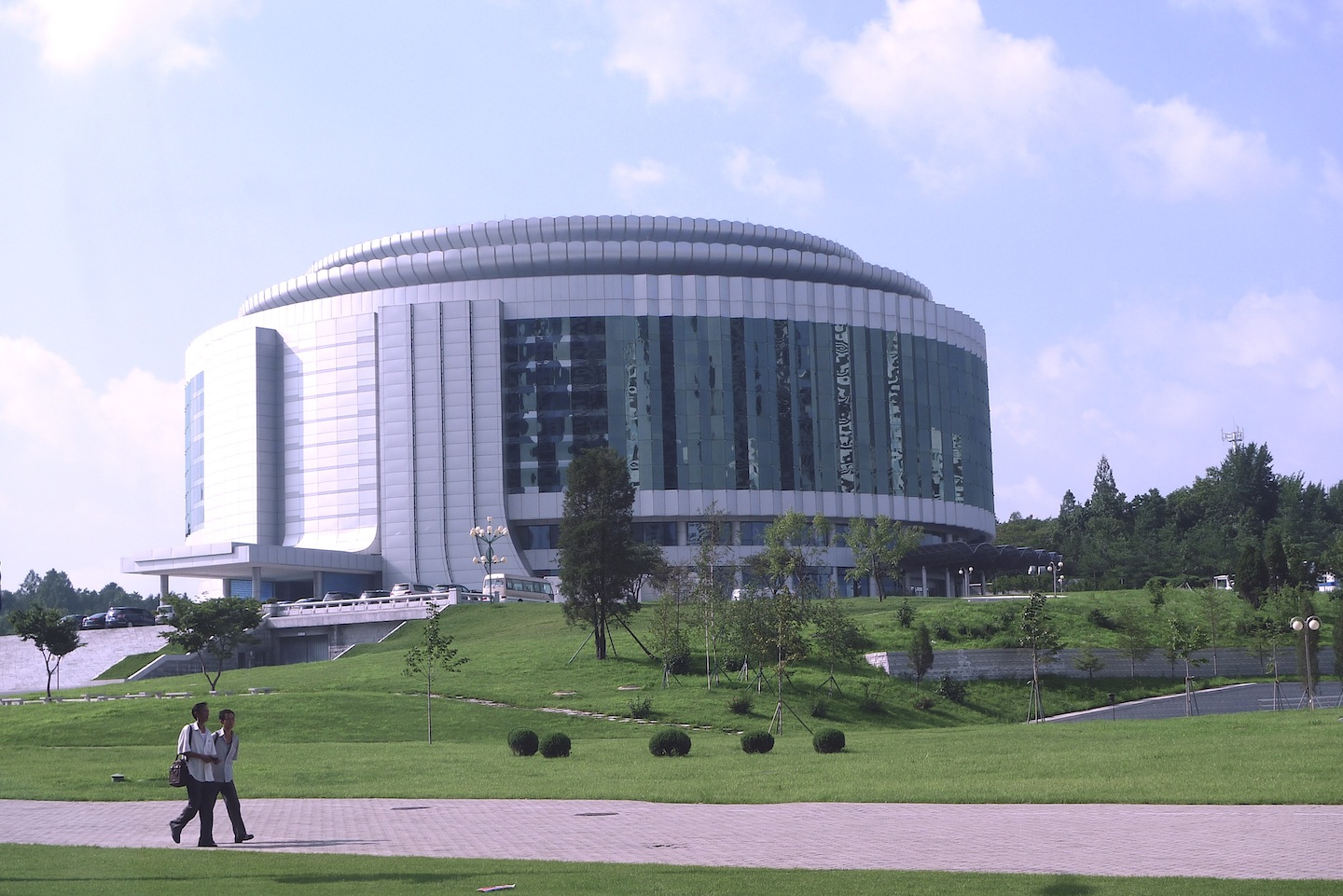Introduction
Ever since the achievements of Renaissance humanism with the triumph of art over nature, with the development of new artistic techniques (the optics of perspective, the structure of anatomy, the mixing of pigments, and the development of movement) art was strengthened and, combined with the scientific explorations and achievements of the Enlightenment, led to the idea that Man could become stronger and better and hold an optimistic view of the future. He could improve his well-being and even take control of nature to create a better life for all. This view continued through the decades and was associated with social revolutions and political activity which connected progressive ideas about society to artistic forms of expression which would illustrate and advance the hopes and desires of the masses for a better life and future. These artistic movements changed and developed from the Enlightenment to Realism to Social Realism and then to Socialist Realism as artists both inspired and reflected the people’s progressive movements the world over.
However, at every juncture, oppositional movements also stepped in and opposed progressive change and revolution by the people; from the Romantic movement in Revolutionary France to the Modernist movement to Postmodernism and now Metamodernism. These movements have derided every aspect of the progressive forces, from the quietist “l’art pour l’art” of Romanticism to the attack on artistic form by Modernism, to the later attack on ideological content by Postmodernism and now the ‘oscillation’ between the two (form and content) of Metamodernism, a movement caught between self-obsession and the pressing desire of the masses for ideas and culture that will deal with climate change, financial crises, terror attacks and the neo-liberal squeeze on the social welfare system.
These two movements, Romanticism and the Enlightenment, have their basis in attitudes towards and beliefs in the efficacy of the burgeoning scientific movement. Romanticism, beginning in the 1770s formed the basis of an anti-scientific strand in culture over the last two hundred years while the Enlightenment formed the basis of a scientific strand roughly between between 1715 and 1789. Both strands have been in opposition ever since, their ideas reflected through various cultural movements which sprang up in different countries and at different times, some revolutionary and some reactionary.
Let’s take a look at these two opposing strands in more detail.
The Anti-Scientific Strand
Romanticism
One of the most important movements is Romanticism particularly as it still has a strong anti-science influence today. Romanticism was characterized by its emphasis on emotion and individualism and glorified the past and nature, putting emphasis on the medieval rather than the classical traditions of ideals of harmony, symmetry, and order. The Romantics rejected the norms of the Age of Enlightenment and the scientific rationalization of nature which were important aspects of modernity. Isaiah Berlin believed that the Romantics opposed classic traditions of rationality and it basis in moral absolutes and agreed values which led “to something like the melting away of the very notion of objective truth”.
Objective truth and reason were elevated by the artists and philosophers of the Enlightenment to understand the universe and solve the pressing problems of the world. However, Romanticism promoted the individual imagination as a critical authority allowed of freedom from classical notions of form in art (harmony, symmetry, and order). Romantics were distrustful of the human world, and tended to strive for a close connection with nature to escape elements of modernity such as urbanisation, industrialisation and population growth and therefore allowed them to avoid questions centred around the working class, such as alienation, the ownership of the means of production, living conditions and conditions of employment. The Romantics pursued the idea of “l’art pour l’art” (art for art’s sake) believing that art did not need moral justification and could be morally neutral.
According to Arnold Hauser in The Social History of Art:
“Revolutionary France quite ingeniously enlists the services of art to assist her in this struggle; the nineteenth century is the first to conceive the idea of “l’art pour l’art” [ital] which forbids such a practice. The principle of “pure”, absolutely “useless” art first results from the opposition of the romantic movement to the revolutionary period as a whole, and the demand that the artists should be passive derives from the ruling class’s fear of losing its influence on art.” [1]
This position originated with the elites in the nineteenth century and serves the same function, Romanticism being the main influence of culture today.
Modernism
By the beginning of the 20th century, the Modernist movement was generally referred to as the “avant-garde” until the the word “Modernism” became more popular. Modernism was the rejection of tradition, and the creation of new forms using reprise, incorporation, rewriting, recapitulation, revision and parody. The Modernist ‘rejection of tradition’, like with Romanticism, is the rejection of classical notions of form in art (harmony, symmetry, and order). Modernism (like Romanticism) also rejected the certainty of Enlightenment thinking. Modernism emphasised form over political content and rejected the ideology of Realism and Enlightenment thinking on liberty and progress.
The Realist movement began in the mid-19th century as a reaction to Romanticism, and Modernism was a revolt against the ‘traditional’ values of Realism. Realist painters used common laborers, and ordinary people in ordinary surroundings engaged in real activities as subjects for their works. However, Modernism rejected traditional forms which over time became less and less ´real´ and more abstract and conceptualised.
The Great War brought about more disillusionment with Enlightenment ideals of progress among the Modernists who turned inwards and attacked art forms, instead of war-mongering capitalism. The Romantic continuity in Modernism produced individual, horrified reactions but were ultimately no threat to the ruling elites. Like an angry child smashing his own toys, the Modernist attacked his particular cultural forms and then expected the public to pick up the pieces. What was left was atonalism and abandonment of traditional rhythmic strictures in music, the departure from traditional realist styles in art and the prioritisation of the individual and the interior mind and abandonment of the fixed point of view in literature. The Dada movement, for example, was developed in reaction to the Great War by ‘avant-garde’ artists who rejected the logic, reason, and aestheticism of modern capitalist society but then only to respond with nonsense and irrationality in their art works.
As for the Great War, the avant-garde and Modernism – like the Romantic movement and the French Revolution – failed the masses again as it stood outside the people’s movement, turning in on itself and attacking reason instead of uniting with the progressive forces against war. In the end it was mainly the political movements of James Connolly in Ireland and V.I. Lenin in Russia (the two geographical ends of Europe) who organised the working classes against the war and destruction.
David Alfaro Siqueiros (1896-1974), the revolutionary artist and founder of the Mexican Mural Movement, had this to say about the Modernist ‘avant-garde’:
“If we look closely at their work it is the most reactionary movement in the history of culture. It has not developed anything new in composition or perspective and has lost much of that which has been accumulated over twenty centuries. It is based on the hysteria of novelty for the sake of novelty, in order to satisfy a parasitic plutocracy. The artist who changes his style every 24 hours is the best-known artist. When he has exhausted all the solutions, the others become his followers and sink into repetitious imitation.” [2]
The allusion here presumably to Picasso (1881–1973), famous for changing his style many times, is interesting in relation to Joaquín Sorolla (1863–1923) the great Spanish artist whose depictions of ordinary Spanish people in monumental works of social and historical themes was overshadowed by Picasso until relatively recently. Cubism, credited to Picasso as its inventor, was an art style that conflicted with the representational system in art that had prevailed since the Renaissance, as the subject was depicted from differing viewpoints at the same time within the same painting.
Many pseudo-scientific explanations were given to explain Cubism regarding art in modern society, new scientific developments etc but even Picasso himself ridiculed this:
“Mathematics, trigonometry, chemistry, psychoanalysis, music and whatnot, have been related to cubism to give it an easier interpretation. All this has been pure literature, not to say nonsense, which brought bad results, blinding people with theories”. [2]
Indeed, Cubism is probable the most parodied of all forms of Modernist art.
Other Modernist forms such as Expressionism have been seen to be at least critical of capitalism and war, but according to Lotte H. Eisner who quotes a ‘fervent theorist of this style’, Kasimir Edschmid:
“The Expressionist does not see, he has ‘visions’. According to Edschmid. “the chain of facts: factories, houses, illness, prostitutes, screams, hunger’ does not exist; only the interior vision they provoke exists.” [p10]
Therefore, the external reality of life and death for the working class is ignored for the ecstasy of ‘interior visions’.
For Eisner, writing in The Haunted Screen, German Expressionist cinema is a visual manifestation of Romantic ideals. She writes:
“Poverty and constant insecurity help to explain the enthusiasm with which German artists embraced this movement [Expressionism] which, as early as 1910, had tended to sweep aside all the principles which had formed the basis of art until then.” [pp9-10]
Richard Murphy also notes:
“one of the central means by which expressionism identifies itself as an avant-garde movement, and by which it marks its distance to traditions and the cultural institution as a whole is through its relationship to realism and the dominant conventions of representation.” [3]
Expressionists rejected the ideology of realism, and Expressionist art, in common with Romanticism, reacted to the dehumanizing effect of industrialization and the growth of cities with extreme individualism and emotionalism, not collective social empathy and political change.
After the Great War and the Russian Revolution, in the 1920s and 1930s, the idea of depicting ordinary people in art spread to many countries in Realist and Social Realist forms especially as a reaction to the exaggerated ego encouraged by Romanticism. In the United States the Ashcan School was well know for for works portraying scenes of daily life in New York city’s poorer neighborhoods. However, the unsettling depictions of the darker side of capitalism by the Ashcan School was soon displaced with Modernism in the Armory Show of 1913 and the opening of more galleries in the 1910s who promoted the Modernist artwork of Cubists, Fauves, and Expressionists.
This takeover by Modernism in New York continued into the 1940s and 1950s with the development of Abstract Expressionism, an art form which was soon promoted globally as a counterweight to the Socialist Realism style developed in the Soviet Union, especially during the Cod War. The loose, splashing and dripping of paint in the work of Jackson Pollack became used as a symbol of the ideology of freedom and free enterprise in the United States. The victory of Modernism in the United States served two purposes: national and international. It dampened down the critical dissent of the Ashcan School while at the same time serving as a useful tool of foreign policy.
According to Frances Stonor Saunders in The Cultural Cold War: The CIA and the World of Arts and Letters, Abstract Expressionism was “Non-figurative and politically silent, it was the very antithesis to socialist realism. It was precisely the kind of art the Soviets loved to hate.” [4] This was Modernism at its zenith as the wealthiest of art investors and the most influential art critics promoted Abstract Expressionism as “independent, self-reliant, a true expression of the national will, spirit and character.”[5] However, the size of the confidence trick being perpetrated on the unsuspecting public became unsettling. According to Saunders:
“It was this very stylistic conformity, prescribed by MoMA and the broader social contract of which it was a part, that brought Abstract Expressionism to the verge of kitsch. ‘It was like the emperor’s clothes,’ said Jason Epstein. ‘You parade it down the street and you say, “This is great art,” and the people along the parade route will agree with you. Who’s going to stand up to Clem Greenberg and later to the Rockefellers who were buying it for their bank lobbies and say, “This stuff is terrible”?” [6]
The imposition of Modern Art on the public was also noted by the journalist, Tom Wolfe, who wrote about the 1960s and 1970s art scene in New York in The Painted Word:
“The notion that the public accepts or rejects anything in Modern Art, the notion that the public scorns, ignores, fails to comprehend, allows to wither, crushes the spirit of, or commits any other crime against Art or any individual artist is merely a romantic fiction, a bittersweet Trilby sentiment. The game is completed and the trophies distributed long before the public knows what has happened. […] We can now also begin to see that Modern Art enjoyed all the glories of the Consummation stage after the First World War not because it was “finally understood” or “finally appreciated” but rather because a few fashionable people discovered their own uses for it.” [7]
It was also in the early 1970s that the Irish artist Seán Keating (1889–1977), a Realist painter who painted images of the Irish War of Independence, the early industrialization of Ireland and many portraits of the people of the Aran Islands, was brought face to face with Modernism. In a well-known televised interview, Keating, now in his 60s, was brought around the ROSC’71 exhibition and asked to give his opinion on the exhibits. As Eimear O’Connor writes:
“When confronted by The Table, made by German artist Eva Aeppli (b.1925), Keating said it was ‘downright horrible perversity, nightmare stuff … an old lady who had gone completely mad and is dangerous … I think it is morose … vengeful against the human race…'” [8]
This baiting of a famous Irish humanist whose love of the Irish people and progress displayed the new confidence of the Irish elites who had jumped on the Modernist bandwagon as an symbol of fashionability and of final acceptance by the European elites who would allow Ireland to join the EEC (EU) in 1973.

Economic Pressure by Seán Keating (1949)
Scene of man bidding farewell to his family as he prepares to emigrate from Aran Islands.
(The Irish peasant betrayed: elevated as a national symbol before Independence yet ignored afterwards.)
Postmodernism
In the meantime, Postmodernism was gaining strength. Some features of Postmodernism in general can be found as early as the 1940s but it would compete with Modernism in the late 1950s and became predominant by the 1960s.
Postmodernism is defined as follows:
“Postmodernism, also spelled post-modernism, in Western philosophy, a late 20th-century movement characterized by broad skepticism, subjectivism, or relativism; a general suspicion of reason; and an acute sensitivity to the role of ideology in asserting and maintaining political and economic power. Postmodernism as a philosophical movement is largely a reaction against the philosophical assumptions and values of the modern period of Western (specifically European) history—i.e., the period from about the time of the scientific revolution of the 16th and 17th centuries to the mid-20th century. Indeed, many of the doctrines characteristically associated with postmodernism can fairly be described as the straightforward denial of general philosophical viewpoints that were taken for granted during the 18th-century Enlightenment, though they were not unique to that period.”
In other words, Postmodernism had a direct line of descent from Modernism and Romanticism before that. The same Romantic characteristics show up again – the suspicion of reason, subjectivism and denial of the ideas of the Enlightenment. Once again cynicism towards the idea of progress and working class improvement is the mainstay. Every technique and trick of avoidance of the important issues facing the people’s movement is used in Postmodernism: “common targets of postmodern critique include universalist notions of objective reality, morality, truth, human nature, reason, language, and social progress” and “postmodern thought is broadly characterized by tendencies to self-referentiality, epistemological and moral relativism, pluralism, subjectivism, and irreverence.”
Postmodernist artists decided that past styles (once criticised for being ‘traditional’) were now usable in a parodic way along with appropriation and popular culture. The Postmodernist critique of universalist notions of objective reality and social progress, or the Grand Narratives, has particular implications for the working classes and popular political movements as their liberatory philosophy and ideologies are based on them – whatever their supposed successes or failures in the past. To take them away is to fall back on the neo-liberal philosophy of the end-of-history and more of the same globalised capitalism ad infinitum. After the attack on Form in Modernism, we now get an assault on Content in Postmodernism.
When applied to the people’s movement itself, such as the French Revolution, Postmodernist historiography for example, all but wipes out its historic relevance and importance. As Richard J Evans writes in In Defence of History, Simon Schama’s book Citizens: A Chronicle of the French Revolution over-emphasises the bloody and violent nature of the revolution as if the politically-conscious people taking their lives into their own hands were irrational beings exploding with an animal lust for violence. Evans comments:
“In Citizens, indeed, the French Revolution of 1789-94 becomes almost meaningless in the larger sense, and is reduced to a kind of theatre of the absurd; the social and economic misery of the masses, an essential driving force behind their involvement in the revolutionary events, is barely mentioned; and the lasting significance of the Revolution’s many political theories and doctrines for modern European and world history more or less disappears.” [9]
The more opaque forms of relativistic Postmodernist writing and thinking were exposed when Alan Sokal refused to get into line and exposed the French Postmodernists in a hoax essay published in Social Text in 1996. According to Francis Wheen in How Mumbo Jumbo Conquered the World:
“As a socialist who had taught in Nicaragua after the Sandinista revolution, he [Sokal] felt doubly indignant that much of the new mystificatory folly emanated from the self-proclaimed left. For two centuries, progressives had championed science against obscurantism. The sudden lurch of academic humanists and social scientists towards epistemic relativism not only betrayed this heritage but jeopardised ‘the already fragile prospects for a progressive social critique’, since it was impossible to combat bogus ideas if all notions of truth and falsity ceased to have any validity.” [10]
The obvious contradictions and cul-de-sacs of Postmodernism eventually brought it into decline and soon doors opened for a new obfuscatory philosophy to buttress increasingly crisis-ridden globalised capitalism – Metamodernism.
Metamodernism
According to Timotheus Vermeulen & Robin van den Akker in ‘Notes on Metamodernism‘:
“The postmodern years of plenty, pastiche, and parataxis are over. In fact, if we are to believe the many academics, critics, and pundits whose books and essays describe the decline and demise of the postmodern, they have been over for quite a while now. But if these commentators agree the postmodern condition has been abandoned, they appear less in accord as to what to make of the state it has been abandoned for. In this essay, we will outline the contours of this discourse by looking at recent developments in architecture, art, and film. We will call this discourse, oscillating between a modern enthusiasm and a postmodern irony, metamodernism. We argue that the metamodern is most clearly, yet not exclusively, expressed by the neoromantic turn of late”.
So there you have it – this is the best that Metamodernism can offer – a return to Romanticism! We have now come full circle as “the metamodern is most clearly, yet not exclusively, expressed by the neoromantic turn of late”.
And where is this pressure coming from, to allow a little reality back into the arts?
“Some argue the postmodern has been put to an abrupt end by material events like climate change, financial crises, terror attacks, and digital revolutions […] have necessitated a reform of the economic system (“un nouveau monde, un nouveau capitalisme”, but also the transition from a white collar to a green collar economy)”.
So the contemporary crises of capitalism and climate change are finally impinging on the disintegrating Postmodern artistic consciousness and the answer is reformism and ‘new capitalism’. However, Metamodernism is “Like a donkey it chases a carrot that it never manages to eat because the carrot is always just beyond its reach. But precisely because it never manages to eat the carrot, it never ends its chase”. With a little bit of progressive critique, the Metamodern artist can regain credibility without ever really challenging the status quo.
From all of the above we can see the common threads tying Romanticism, Modernism, Postmodernism and Metamodernism together: individualism, art for art’s sake, suspicion of reason, subjectivism and denial of the ideas of the Enlightenment. All individualist movements that oppose the idea of collectivist ideology and action. Movements that ultimately serve the status quo and the ruling elites. Yet some of these same elites were involved in the development of the concepts of the Enlightenment in the beginning. What happened to them?

Night’s Candles Are Burnt Out by Seán Keating (1927-28)
Ardnacrusha – Ireland’s first power-station built by Siemens post-independence in the 1920s, a hydro-electric dam built on the river Shannon, north of Limerick.
(Disillusioned Irish workers unemployed and drinking as the new elites begin the process of state-building.)
The Scientific Strand
The Enlightenment
The Enlightenment was an intellectual and philosophical movement that dominated the world of ideas in Europe during the 18th century. Enlightenment thinkers believed in the importance of rationality and science. They believed that the natural world and even human behavior could be explained scientifically. They felt that they could use the scientific method to improve human society. For the artists and philosophers of the Enlightenment, the ideal life was one governed by reason. Artists and poets strove for ideals of harmony, symmetry, and order, valuing meticulous craftsmanship and the classical tradition. Among philosophers, truth was discovered by a combination of reason and empirical research.
In the field of political philosophy the English philosopher Thomas Hobbes developed some of the fundamentals of European liberal thought: the right of the individual, the natural equality of all men and the idea that legitimate political power must be “representative” and based on the consent of the people. Therefore the Enlightenment popularised the idea that with the use of reason and logic social development and progress would be the norm for the masses and science and technology would be the instruments of human progress. The ideas of the Enlightenment paved the way for the political revolutions of the 18th and 19th centuries as it undermined the authority of the monarchy and the Church. The French Revolution become the first main conflict between the men of the Enlightenment and the aristocracy. Within the arts this conflict arose between those who believed that art had a role to play and those who believed in art-for art’s-sake. As Hauser notes:
“It is only with the Revolution that art becomes a confession of political faith, and it is now emphasized for the first time that it has to be no “mere ornament on the social structure,” but “a part of its foundations.” It is now declared that art must not be an idle pastime, a mere tickling of the nerves, a privilege of the rich and the leisured, but it must teach and improve, spur on to action and set an example. It must be pure, true, inspired and inspiring, contribute to the happiness of the general public and become the possession of the whole nation.” [11]
However, the rising bourgeoisie who advocated the ideas of the Enlightenment realised that their objectives and those of the revolutionary public were not the same:
“Yet as soon as the bourgeoisie had achieved its aims, it left its former comrades in arms in the lurch and wanted to enjoy the fruits of the common victory alone. […] Hardly had the Revolution ended, than a boundless disillusion seized men’s souls and not a trace remained of the optimistic philosophy of the enlightenment.” [12]
Thus began the conflict between the new rulers, the bourgeoisie, who wanted to set limits on progress, and the interests of the toiling masses who had not yet achieved one of the most basic concepts of Enlightenment philosophy: the natural equality of all men. This struggle for political and social freedom took different forms over the next century or so but had as one of its bases the idea that the arts would play a role.
Realism
As the bourgeoisie stepped up its development of capitalist society building factories and markets, the Realist movement reacted to Romanticist escapism in favor of depictions of ‘real’ life, emphasizing the mundane, ugly and sordid. The Realist artists used common laborers and ordinary people in their normal work environments as the main subjects for their paintings. Its chief exponents were Gustave Courbet, Jean-François Millet, Honoré Daumier, and Jean-Baptiste-Camille Corot. Courbet hated the aristocracy and royalty, and advocated political and social change. He painted ordinary people and in sizes usually reserved for gods and heroes. Realist movements, like the Peredvizhniki or Wanderers group in Russia, developed in many other Western countries.
Social Realism
Meanwhile, as the the Industrial Revolution grew in Britain, concern for the factory workers led to a meeting betwen Marx and Engels and a major change in the ideology of the working class organisations seeking better conditions. While the Romantics believed that the Industrial Revolution and its exploitative extremes in the factories was the result of science, the Marxists instead questioned the ownership of the factories and who benefited from the greatly increased power of the new means of production, means that could benefit society as a whole. Therefore while the Romantics looked back to the medieval artisans and peasants, the Marxists saw science creating new possibilities for a better future for everybody.
Social Realism grew out of these changes as Social Realist artists drew attention to the everyday conditions of the working class and the poor and criticised the social structures which maintained these conditions. The Mexican and Russian revolutions gave a fillip to the Social Realist movement which reached its height of popularity during the 1920s and 1930s when capitalism was under severe pressure from the global economic depression. The Ashcan School in the USA and the Mexican muralist movement were two groups who exerted a huge influence at the time and many of the artists involved at the time were supporters of political working class movements. While contemporary Social Realism has been kept in the background it is still a popular style with progressive artists.
Socialist Realism
As nationalist struggles of the nineteenth century changed into socialist struggles during the twentieth century, the style and form of the art changed too as ordinary people were now depicted as subjects with dignity and power. This style became known as Socialist Realism. It was pronounced state policy at the Soviet Writers’ Congress in 1934 in the Soviet Union and became a dominant style in other socialist countries. Like Social Realism, Socialist Realism also met with fierce denunciations and controversy. However, despite its caricature as a style that depicts people as naïve, happy, joyous ciphers, its originators condemned any attempt to portray people living in an idyllic paradise as the work of shallow artists who would never be taken seriously by the populace:
“An artist who tried to represent the birth of socialism as an idyll, who tried to represent the socialist system, which is being born in hard-fought battles, as a paradise populated by ideal people – such an artist would not be a realist, would not be able to convince anyone by his works. The artist should show how socialism is built out of the bricks of the past, out of the material which the past has left us, out of the material which we ourselves create in the sweat of our brow, in the blood of our toil and struggle, in, the hard battles of classes and in the hard toil of man to remold himself.”
Socialist Realism went into decline in the 1960s as the Soviet Union itself went from crisis to crisis until its end in 1991. Today it is a style which is still much criticised. Why is Socialist Realism such a taboo? Because Socialist Realism is a quadruple whammy – it contains four elements that elites don’t like:
- Anything to do with the Soviet Union (then) or Russia (today)
- Any depictions of the working class anywhere (which are not subservient)
- Any discussion of socialism or socialist ideology (past, present or future)
- Any realist depiction of opposition to capitalism (that could influence others)
If one looks at ‘history of Western art’ books it becomes apparent that there are very few positive images of the working class but plenty of images glorifying monarchs, aristocrats, the middle classes and Noble Peasants (the useful idiots of nationalism). Representations of peasants usually take the form of non-threatening genre paintings and any Socialist Realist art is excluded.

Irish Industrial Development (oil on wood panels) by Seán Keating (1961)
International Labour Offices (ILO) Geneva, Switzerland
(Positive images of Irish workers by Irish artist in Geneva – must be Socialist Realism!)
Conclusion
The fact is that Romanticism in its different forms has made sure to keep the working classes out of the picture and the only response of the people’s movements should be to keep Romanticist influences at arms length. Romanticism has become the capitalist art par excellence. Romanticism vacillates between cultures of despair and Nihilism. It is opposed to logic and reason and its extreme individualism ensures a divisive affect on any collectivist organisation. Romanticism pervades most mass culture today and sells egoism and impotence back to the very people who turn to it for solace from desperation.
The long conflict between Romanticism and Enlightenment ideas contained in art movements over the last two centuries is set to continue as new responses to the contemporary crises of capitalism try to ameliorate the situation or fundamentally change the system underpinning it. What is needed are new national debates on the role and function of art in maintaining or changing the structure of society. Debates similar to those described by an eyewitness to the Paris Commune, Villiers de l’Isle-Adam, who wrote: “a whole population is discussing serious matters, and for the first time workers can be heard exchanging their views on problems which up until now have been broached only by philosophers.” [13]
*
Caoimhghin Ó Croidheáin is an Irish artist, lecturer and writer. His artwork consists of paintings based on contemporary geopolitical themes as well as Irish history and cityscapes of Dublin. His blog of critical writing based on cinema, art and politics along with research on a database of Realist and Social Realist art from around the world can be viewed country by country at http://gaelart.blogspot.ie/. He is a Research Associate of the Centre for Research on Globalization.
Notes:
[1] Arnold Hauser, The Social History of Art, Vol 3 (Vintage Books, 1958) p147
[2] D. Anthony White, Siqueiros: Biography of a Revolutionary Artist (Booksurge.com, 2008) p413
[3] Richard Murphy, Theorizing the Avant-Garde: Modernism, Expressionism, and the Problem of Postmodernity (Cambridge, Cambridge University Press,1999) p43
[4] Frances Stonor Saunders, The Cultural Cold War: The CIA and the World of Arts and Letters (The New Press, 1999) p254
[5] Frances Stonor Saunders, The Cultural Cold War: The CIA and the World of Arts and Letters (The New Press, 1999) p254
[6] Frances Stonor Saunders, The Cultural Cold War: The CIA and the World of Arts and Letters (The New Press, 1999) p275
[7] Tom Wolfe, The Painted Word (Bantam Books, 1987) p26/7
[8] Eimear O’Connor and Virginia Teehan, Sean Keating: In Focus (Hunt Museum, 2009) p33
[9] Richard J. Evans, In Defence of History (Granta Books, 2000) p245
[10] Francis Wheen, How Mumbo Jumbo Conquered the World (Harper Perennial, 2004) p89/90
[11] Arnold Hauser, The Social History of Art, Vol 3 (Vintage Books, 1958) p147
[12] Arnold Hauser, The Social History of Art, Vol 3 (Vintage Books, 1958) p157
[13] Villiers de l’Isle-Adam, in Le Tribun du Peuple, May 10, 1871, quoted in Stewart Edwards, The Paris Commune 1871 (Quadrangle, 1977) p283



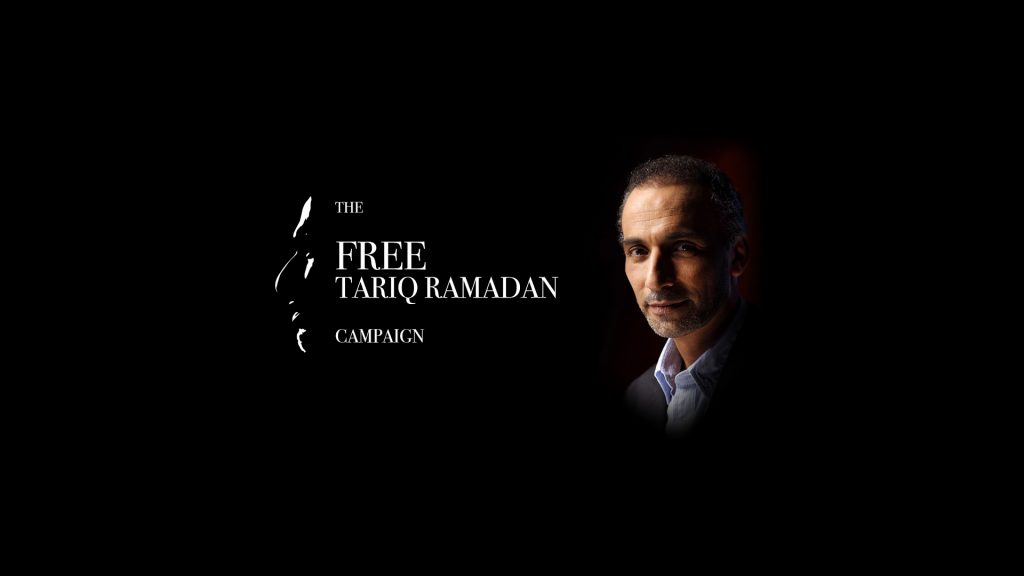










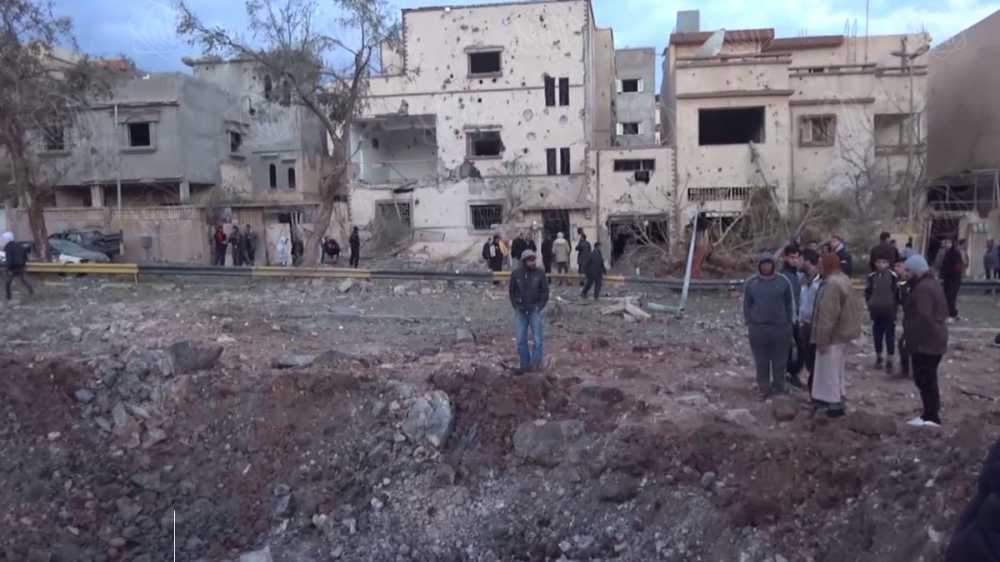
 Can you
Can you 
